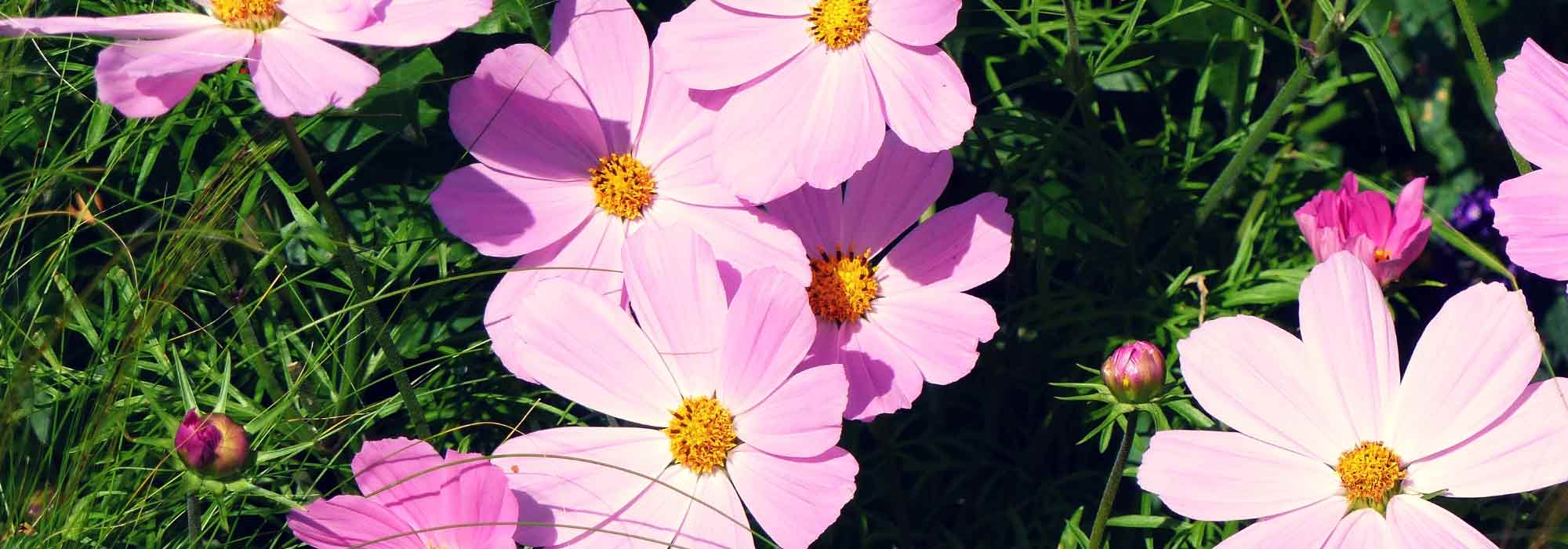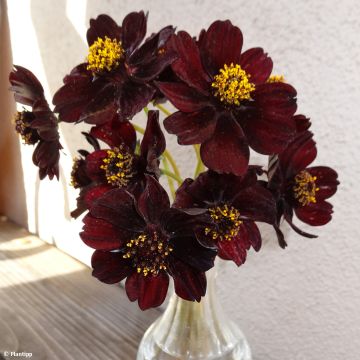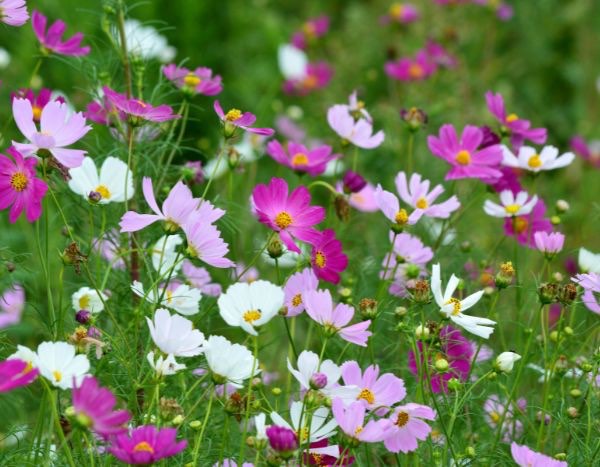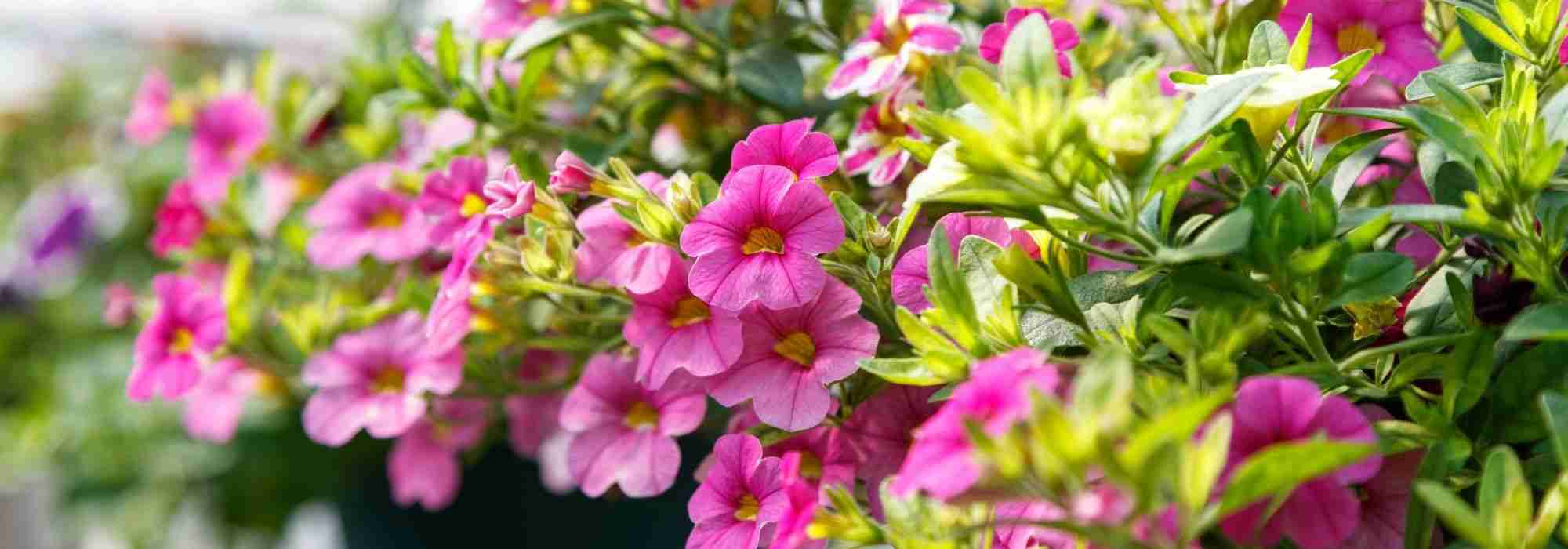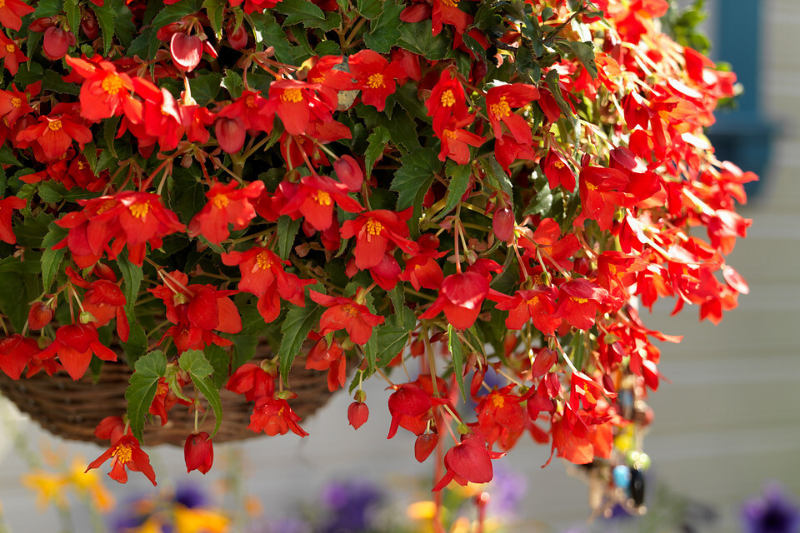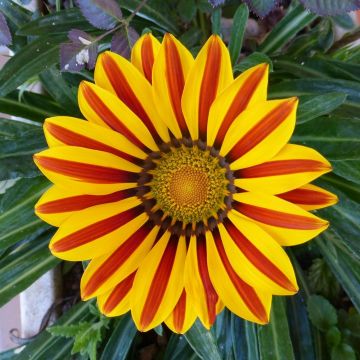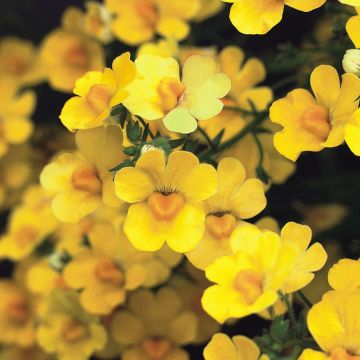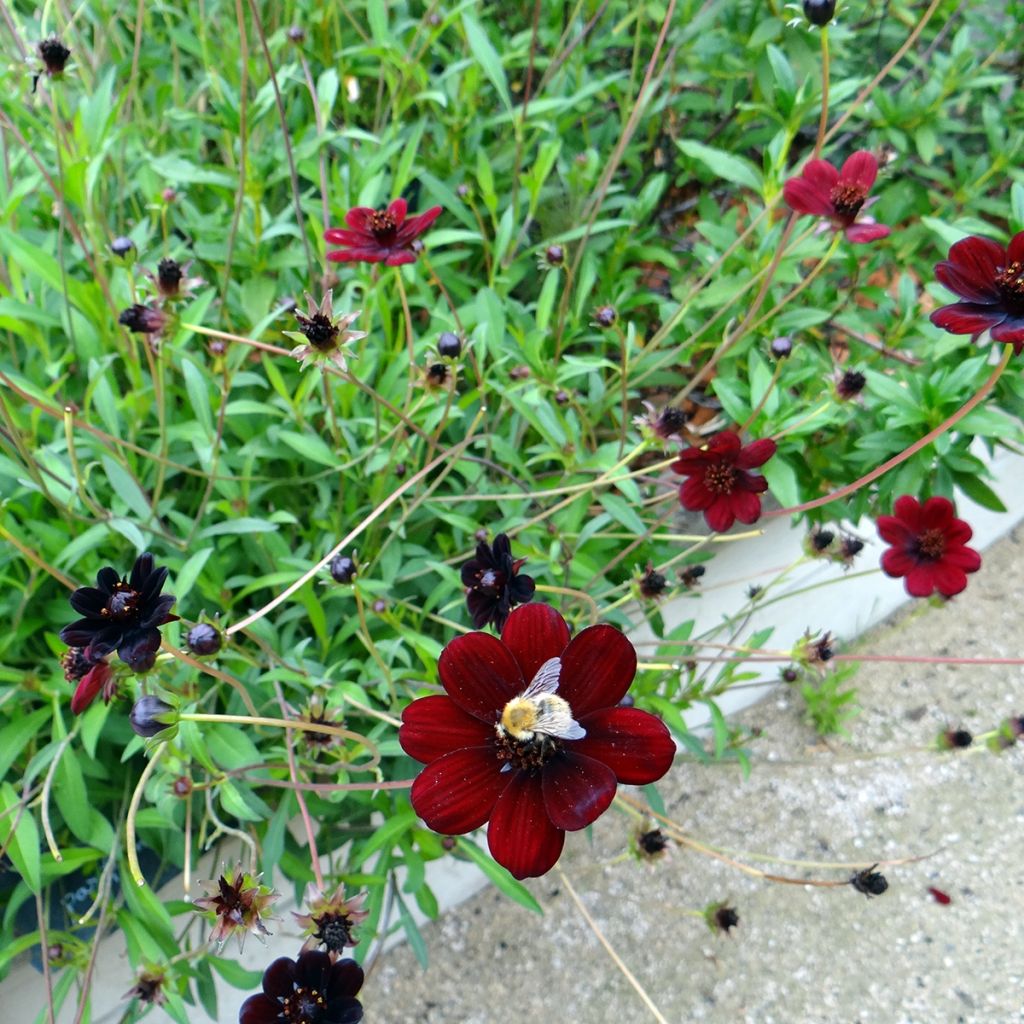

Cosmos atrosanguineus Black Magic - Cosmos chocolat
Cosmos atrosanguineus Black Magic - Chocolate Cosmos
Cosmos atrosanguineus Black Magic
Chocolate Cosmos
Special offer!
Receive a €20 voucher for any order over €90 (excluding delivery costs, credit notes, and plastic-free options)!
1- Add your favorite plants to your cart.
2- Once you have reached €90, confirm your order (you can even choose the delivery date!).
3- As soon as your order is shipped, you will receive an email containing your voucher code, valid for 3 months (90 days).
Your voucher is unique and can only be used once, for any order with a minimum value of €20, excluding delivery costs.
Can be combined with other current offers, non-divisible and non-refundable.
Home or relay delivery (depending on size and destination)
Schedule delivery date,
and select date in basket
This plant carries a 6 months recovery warranty
More information
We guarantee the quality of our plants for a full growing cycle, and will replace at our expense any plant that fails to recover under normal climatic and planting conditions.
Would this plant suit my garden?
Set up your Plantfit profile →
Description
This Cosmos atrosanguineus 'Black Magic' is a variety of chocolate cosmos that stands out for its upright habit, floribundity, larger flowers from red to black, and a pronounced chocolate fragrance. Moreover, this selection can produce some fertile seeds, unlike the wild plant and other varieties. This peculiar cosmos, often considered an annual, is a perennial plant with its tuber, not very hardy but resistant to heat and water-efficient. It can be grown like a Dahlia. It will thrive in light, humus-rich, moist, dry soils, in full sun or partial shade.
The 'Black Magic' chocolate cosmos was recently selected in New Zealand. Its wild ancestor is native to Mexican pine forests and is extinct. These plants belong to the Aster family. This cosmos has the peculiarity of not producing viable seeds and is mainly propagated by tuber division. It, therefore, resembles a Dahlia more than a cosmos. The 'Black Magic' variety develops from a fleshy tuber that is quite sensitive to frost in moist soil and quickly forms a clump of about 60 cm (24in) in height and 40 cm (16in) in width from spring onwards. The foliage, divided into lobes, somewhat resembles that of peonies. It consists of glossy green leaves slightly tinged with dull violet. The flowering stems appear from June to October, provided that faded flowers are regularly removed. The flowers are heads of almost 5 cm (2in) in diameter. They have ligulate florets in a very dark red to blackish shade, arranged on the periphery, and a heart of equally dark tubular florets. These heads are fragrant, especially in hot weather and in the evening. This variety produces some viable seeds that can be sown under cover. In open ground, it can withstand a few degrees of frost (about -8°C (17.6°F)) occasionally, and if the soil is well-drained, kept almost dry under a thick mulch.
The Cosmos atrosanguineus 'Black Magic' is sublime when paired with grey and silver foliage and stunning with lady's mantle. It looks beautiful when planted alongside mugworts, lamb's ears, or sea cineraria in borders or pots. Its flowers' warm tone brightens pastel colours like the pink of annual poppies, the blue of perennial flax, or even the azure of blue thistle. It stands out well against the acid green foliage of bipinnate cosmos, fennel, or Alchemilla mollis.
Flowering
Foliage
Plant habit
Botanical data
Cosmos
atrosanguineus
Black Magic
Asteraceae
Chocolate Cosmos
Cultivar or hybrid
Other Cosmos
View all →Planting and care
Plant Cosmos atrosanguineus 'Black Magic' in spring, once the frosts have passed, in a light, humus-rich, well-drained soil. It prefers sunny locations, which will reveal the intensity of its fragrance, but tolerates partial shade. Once well established, it can withstand moderate drought and heat. Its frost resistance is limited: a well-drained and fairly dry soil in winter will allow it to withstand a brief frost of around -8°C (17.6°F) under a thick mulch. It can be grown like a Dahlia by lifting the tubers before the frosts and storing them in a cool place. It also performs very well in pots. This cultivation method allows the pots to be stored in a cool and bright place during the winter. Under these conditions, it will flower for a good part of the year. Regularly remove faded flowers to encourage the renewal of flowering.
Planting period
Intended location
Care
Planting & care advice
This item has not been reviewed yet - be the first to leave a review about it.
Similar products
Haven't found what you were looking for?
Hardiness is the lowest winter temperature a plant can endure without suffering serious damage or even dying. However, hardiness is affected by location (a sheltered area, such as a patio), protection (winter cover) and soil type (hardiness is improved by well-drained soil).

Photo Sharing Terms & Conditions
In order to encourage gardeners to interact and share their experiences, Promesse de fleurs offers various media enabling content to be uploaded onto its Site - in particular via the ‘Photo sharing’ module.
The User agrees to refrain from:
- Posting any content that is illegal, prejudicial, insulting, racist, inciteful to hatred, revisionist, contrary to public decency, that infringes on privacy or on the privacy rights of third parties, in particular the publicity rights of persons and goods, intellectual property rights, or the right to privacy.
- Submitting content on behalf of a third party;
- Impersonate the identity of a third party and/or publish any personal information about a third party;
In general, the User undertakes to refrain from any unethical behaviour.
All Content (in particular text, comments, files, images, photos, videos, creative works, etc.), which may be subject to property or intellectual property rights, image or other private rights, shall remain the property of the User, subject to the limited rights granted by the terms of the licence granted by Promesse de fleurs as stated below. Users are at liberty to publish or not to publish such Content on the Site, notably via the ‘Photo Sharing’ facility, and accept that this Content shall be made public and freely accessible, notably on the Internet.
Users further acknowledge, undertake to have ,and guarantee that they hold all necessary rights and permissions to publish such material on the Site, in particular with regard to the legislation in force pertaining to any privacy, property, intellectual property, image, or contractual rights, or rights of any other nature. By publishing such Content on the Site, Users acknowledge accepting full liability as publishers of the Content within the meaning of the law, and grant Promesse de fleurs, free of charge, an inclusive, worldwide licence for the said Content for the entire duration of its publication, including all reproduction, representation, up/downloading, displaying, performing, transmission, and storage rights.
Users also grant permission for their name to be linked to the Content and accept that this link may not always be made available.
By engaging in posting material, Users consent to their Content becoming automatically accessible on the Internet, in particular on other sites and/or blogs and/or web pages of the Promesse de fleurs site, including in particular social pages and the Promesse de fleurs catalogue.
Users may secure the removal of entrusted content free of charge by issuing a simple request via our contact form.
The flowering period indicated on our website applies to countries and regions located in USDA zone 8 (France, the United Kingdom, Ireland, the Netherlands, etc.)
It will vary according to where you live:
- In zones 9 to 10 (Italy, Spain, Greece, etc.), flowering will occur about 2 to 4 weeks earlier.
- In zones 6 to 7 (Germany, Poland, Slovenia, and lower mountainous regions), flowering will be delayed by 2 to 3 weeks.
- In zone 5 (Central Europe, Scandinavia), blooming will be delayed by 3 to 5 weeks.
In temperate climates, pruning of spring-flowering shrubs (forsythia, spireas, etc.) should be done just after flowering.
Pruning of summer-flowering shrubs (Indian Lilac, Perovskia, etc.) can be done in winter or spring.
In cold regions as well as with frost-sensitive plants, avoid pruning too early when severe frosts may still occur.
The planting period indicated on our website applies to countries and regions located in USDA zone 8 (France, United Kingdom, Ireland, Netherlands).
It will vary according to where you live:
- In Mediterranean zones (Marseille, Madrid, Milan, etc.), autumn and winter are the best planting periods.
- In continental zones (Strasbourg, Munich, Vienna, etc.), delay planting by 2 to 3 weeks in spring and bring it forward by 2 to 4 weeks in autumn.
- In mountainous regions (the Alps, Pyrenees, Carpathians, etc.), it is best to plant in late spring (May-June) or late summer (August-September).
The harvesting period indicated on our website applies to countries and regions in USDA zone 8 (France, England, Ireland, the Netherlands).
In colder areas (Scandinavia, Poland, Austria...) fruit and vegetable harvests are likely to be delayed by 3-4 weeks.
In warmer areas (Italy, Spain, Greece, etc.), harvesting will probably take place earlier, depending on weather conditions.
The sowing periods indicated on our website apply to countries and regions within USDA Zone 8 (France, UK, Ireland, Netherlands).
In colder areas (Scandinavia, Poland, Austria...), delay any outdoor sowing by 3-4 weeks, or sow under glass.
In warmer climes (Italy, Spain, Greece, etc.), bring outdoor sowing forward by a few weeks.






























